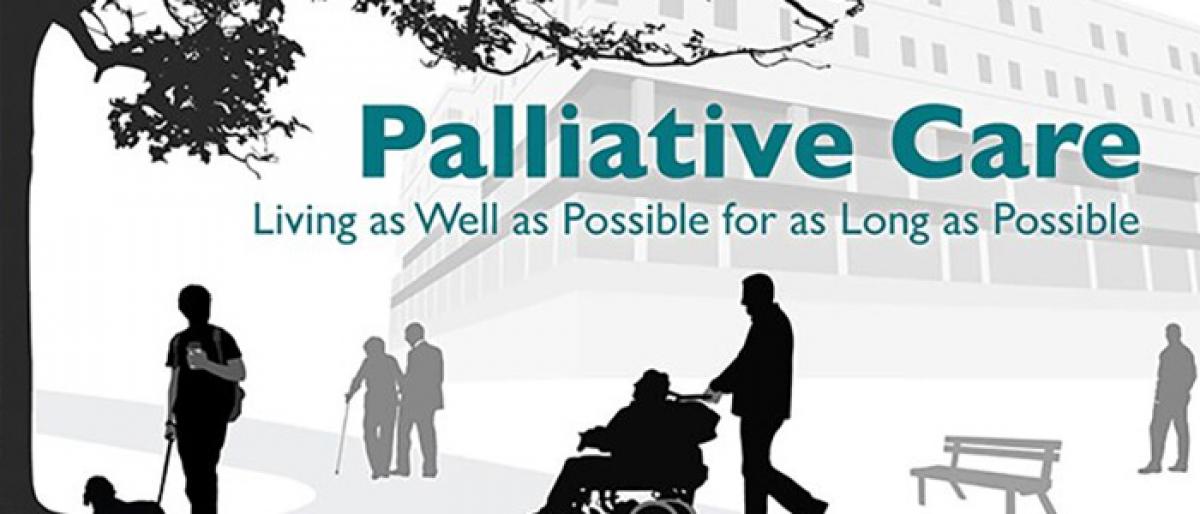Live
- ‘Hanging up my racquet. Thank you’ - India’s Prajnesh Gunneswaran retires from professional tennis
- Pawan Kalyan to Campaign for NDA Alliance in Maharashtra
- Eight killed, five injured in Nepal's traffic accident
- Technical snag grounds PM Modi's aircraft in Jharkhand
- Divya Pillai FL from ‘Bhairavam’ unveiled
- Tension in Lagcherla as BRS Leaders Allegedly Incite Landless Poor
- India vs South Africa 4th T20I Today: Know About Venue, Squad, Start Time, and Live Streaming Details.
- Abhishek says ‘sounds cool’ to be making a film about ‘someone who has 100 days to live’
- Samsung to buy back stock worth $7.16 billion to boost shareholder value
- ICC Champions Trophy 2025: Trophy tour to start from Islamabad on November 16; to travel to Karachi, Lahore and Rawalpindi
Just In

Recently, I spent an hour with a group of resident doctors and public health graduates. With World Health Day (April 7) approaching, our discussion naturally centred around health.
Recently, I spent an hour with a group of resident doctors and public health graduates. With World Health Day (April 7) approaching, our discussion naturally centred around health.
The conclusion: The world's healthcare system does not provide true healthcare. Or teach it. It provides disease-focused treatment, diagnosis and cure. A bit of disease prevention on the side. And if cure is not possible, patients are told, "Sorry; there is nothing more we can do; go home." In such a situation, going home often means receiving no support at all from the medical system, except in the form of half-hearted prescriptions for medications.
When a bed-bound, poor patient is sent away from curative treatment, how much effort goes into teaching the patient and family about preventing of suffering? Pressure sores can kill, through a slow, painful process. Constipation and urinary infections can cause untold suffering.
I told the young doctors why we provide this almost-irrational system of care which focuses only on diagnosis and cure: It is convenient for the medical system. We have the technology to delve deep into human bodies and diagnose and destroy diseases. Yes, in many cases, that is an incredible gift. But what about the consequences for the person as a whole?
No imaging can diagnose depression, anxiety and a gamut of emotions that can often make life worse than death. Understanding these experiences and helping people to overcome them means giving one's time and making the effort. It means giving away some of the authority for treatment to counsellors or social workers, away from doctors and managers. It means engaging volunteers from the community who are willing to help.
But, not all is lost.
The palliative care movement in India has been a silent, slow-evolving revolution in healthcare, helping doctors and other professionals to provide true healthcare – a care that views the person as a whole, identifies elements of suffering, removes certain hardships and improves their quality of life.
This kind of care helps the patient and family to live with the remaining problems as well as they can. This kind of care does not lead to saying, "There is nothing more we can do," because that is simply not true.
There is always something to be done, including treating pain or other symptoms, holding a hand, wiping a tear, or just being there. This kind of care asks providers to convey with their eyes, body language, and hearts, the message: "I care for you; you are important to me."
In India and in most of the developing world, palliative care reaches too few, too late in the continuum of their disease-related suffering. But the world is waking up to the possibilities of palliative care. In 2014, the World Health Assembly asked all countries to integrate palliative care into health systems, at all levels (primary, secondary and tertiary) across the continuum of disease-related suffering from the time of diagnosis, along with disease-focused treatment.
The Lancet Commission on Access to Pain Relief and Palliative Care in 2017 finds that 61 million people around the world have "serious health-related suffering" (SHS) which necessitates palliative care. At least 10 million of them are in India. The commission recommends the creation of a low-cost essential package to deliver palliative care, which would not only make palliative care affordable but also help them avoid expensive but futile curative treatment near the end of life.
And when that happens, the young doctors that I talked to will no longer have to turn away from suffering. They will learn to face it with courage and address as much of the suffering as possible.
By: Dr M R Rajagopal
(Dr MR Rajagopal, the Founder-Chairman of Pallium India palliative care provider)

© 2024 Hyderabad Media House Limited/The Hans India. All rights reserved. Powered by hocalwire.com







